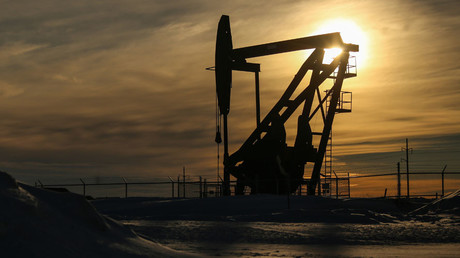Three years of drastic cuts to upstream spending because of the meltdown in oil prices could result in a shortage of oil supply in a few years, according to a new report from the International Energy Agency.
When oil prices collapsed in 2014, oil producers quickly took an ax to their spending. Global oil and gas investment dropped by a quarter in 2015 and by an additional 26 percent last year, the IEA estimates. A long list of projects, particularly very large ones, were put on ice.
Because many of these projects take years to develop, the sharp slowdown between 2014 and 2016 could result in very few sources of new supply hitting the market towards the end of the decade.
To be sure, supply is already coming back. The US has added more than 500,000 bpd since last summer, and shale drillers are ramping up activity. The IEA says that the shale industry achieved cost reductions of about 30 percent in 2015 and 22 percent in 2016, making the average shale well more profitable today than it was before the downturn. That is already leading to a rebound.
But even the nascent recovery in drilling this year will be a far cry from the investment prior to the 2014 oil bust.
Read more on Oilprice.com: Oil Majors To Boost Production As IEA Warns Of Supply Deficit
Moreover, the IEA thinks that even the revival of U.S. shale at lower prices won’t be enough to head off a supply shortage by 2020. The pipeline of new projects is too small.
Meanwhile, demand will continue to grow, eventually overtaking supply. The IEA projects global demand to reach 104 million barrels per day (mbd) by 2020, with the “call on OPEC” reaching 35.8 mbd, up from 32.2 mbd last year.
The market may ask for much higher supply from OPEC, but that would force the group to burn through its spare capacity, which could shrink to well below 2 mb/d. Spare capacity – the ability to ramp up or down supply on short notice – has been one of the key cushions to the oil market for decades. Knowing that Saudi Arabia could plug any supply gap in a pinch helped reduce oil market volatility, and also reduced the risk premium that would hit the market when unforeseen geopolitical flashpoints inevitably cropped up.
The IEA warns that unless a wave of new upstream projects are given the greenlight by exploration companies, OPEC’s spare capacity will fall to low levels and oil prices will rise sharply.
One of the more eye-opening predictions from the IEA is that oil demand will continue to rise without interruption. The agency noted that global oil demand grew by a whopping 2 mb/d in 2015 because of low prices, then by another strong 1.6 mb/d in 2016. Moving forward, demand rises steadily, year after year, by an average of 1.2 mb/d through 2022. India takes over as the largest source of demand growth, a mantle long-held by China.
Read more on Oilprice.com: Oil Prices Hold Steady Ahead Of Inventory Data
The IEA, unlike a growing chorus of analysts, thinks that electric vehicles might only have a marginal impact on demand, slowing consumption growth but ultimately not reversing it. On top of that, oil demand will grow in various sectors not related to passenger vehicles, including freight, marine transit, and aviation. “For all these reasons, the much-discussed peak for oil demand remains some years into the future,” the IEA wrote.
So we have rising demand and a shortage of new supply. But, surely U.S. shale, with its falling breakeven prices and resurgence at $ 50 per barrel can meet the supply gap? The IEA does think that shale will see significant growth, rising by 1.4 mb/d through 2022, assuming oil prices at $ 60 per barrel. If prices rise to, say, $ 80 per barrel, then U.S. shale could see growth of 3 mb/d. But the IEA’s working assumption is that all non-OPEC countries together contribute an extra 3.3 mb/d of supply over the next five years.
The problem with that figure is that demand is expected to rise by 7.2 mb/d over that same timeframe. The end result will be a strain on OPEC supplies. In light of these numbers, the IEA issued a warning. “[W]e are emphasising an important message: more investment is needed in oil production capacity to avoid the risk of a sharp increase in oil prices” by the early 2020s.
This article was originally published on Oilprice.com








